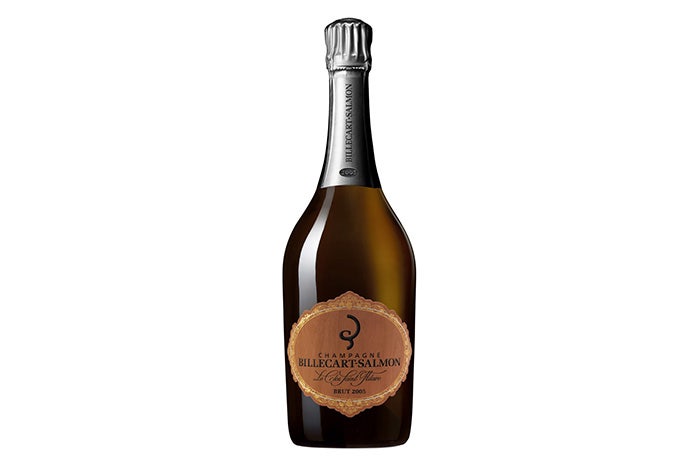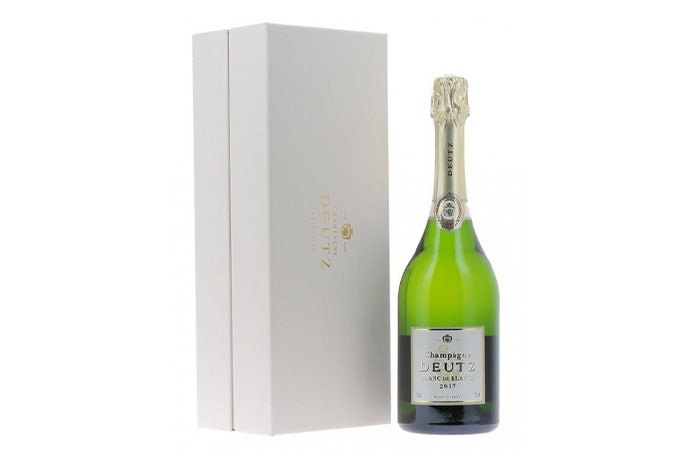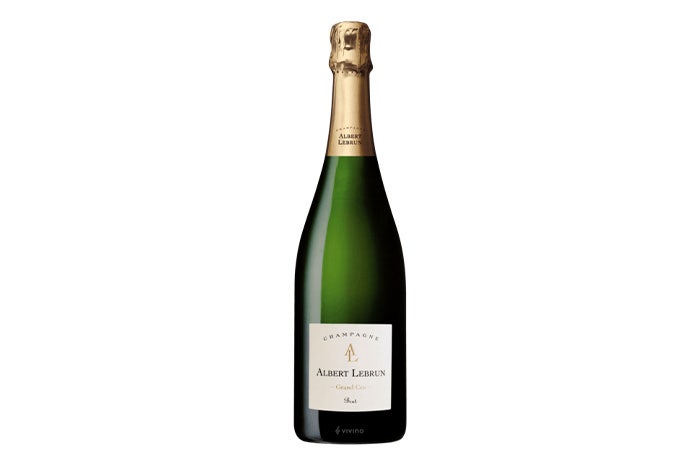At one time, common wisdom dictated that Champagne was for special occasions—holidays, birthdays, engagement parties and other festive celebrations worthy of a toast. But more recently, especially since the COVID-19 pandemic, drinkers in the United States have seemingly decided that any time is a good time to pop a bottle of bubbles.
Between 2019 and 2022, the number of American drinkers enjoying sparkling wine has increased by 30%, according to an International Wine and Spirits Research report, and that growth is forecast to continue. In the same report, projections suggest that the market volume for sparkling wine will grow by more than 15% between 2021 and 2026. The big takeaway? Expect to see more folks in the U.S. drinking more bubbly, more often.
Most sparkling lovers these days have a particular fondness for dry styles—a contrast to the sweet Champagnes popular in the 19th century. But often, labels don’t make it easy to decipher what’s dry and what’s not. Words like “brut” and “extra brut” may leave some consumers scratching their heads. Here’s everything you need to know.
You May Also Like: The Making of a 100-Point Wine: A Champagne from a Special Place
What Is Brut Champagne?
To make Champagne, which is a sparkling wine specifically made in Champagne, France, winemakers use a technique called the traditional method. Through this technique, the wine undergoes a second fermentation in the bottle and spends time in contact with the lees—dead yeast cells—which creates a sparkling wine with a rounded body and creamy, nutty and toasty notes. During the final stage of Champagne production, winemakers will add a sweet element (usually sugar or a tincture of wine and sugar) known as dosage to balance out the acidity. The wine is considered “brut” if the finished Champagne has anywhere between zero and 12 grams per liter of residual sugar.
“‘Brut’ technically defines a certain dosage,” says Mathieu Roland-Billecart, CEO and 7th generation family member of Champagne Billecart-Salmon. But there’s more to it than that. “More widely, it is often used to describe a traditional blend cuvée that forms the core and entry point to a range of wines a Champagne house produces.”
Brut, which includes reds, whites and rosé, is the most popular category of dry sparkling wine. However, it’s not the driest. Beyond brut, Champagne with zero to six grams per liter of residual sugar can be labeled extra brut, and if a sparkling wine has less than three grams per liter of residual sugar, it is labeled brut nature or zero dosage. These labeling requirements are also used beyond Champagne: Wineries in other areas of France, the U.S., Italy, Spain and other global wine regions follow the same labeling guidelines for brut.
Determining the right dosage to create a balanced brut wine is an artform. For example, a wine with lower acidity only needs a small dosage. Also, the longer a wine ages on the lees, the creamier it becomes, which can also impact dosage decisions, explains Tami Lotz, winemaker at Mumm Napa.
“The majority of the wines we produce are brut-style wines, but the level of dosage added to find that balance varies from wine to wine,” she says. “It’s all about the balance, and these decisions are made with our palates, not in the lab.”
For Shane Moore, winemaker at Gran Moraine in Oregon, making a brut sparkling wine “starts with your viticulture.” To retain higher acidity, grapes destined for brut sparkling wines are typically picked earlier than the fruit used for still wines. All of these decisions influence “what you’re doing in the winery after that,” says Moore.
The most crucial factor to remember about brut sparkling is that it will “not have any perceived sweetness to it,” adds Elyse Leavenworth, a sommelier with Sommsation.
You May Also Like: Biodynamic Bubbles: How Sparkling Wine Producers Are Promoting Sustainability
What Is the Difference Between Brut and Extra Dry?
Sometimes, you may come across a bottle that doesn’t say “brut” at all, but rather “extra dry.” Don’t be fooled by the play on words.
“You would think that ‘extra dry’ means ‘extra brut,’” says Leavenworth. But “the technical definition of ‘extra dry’ is actually anywhere from 12 to 17 grams per liter of residual sugar. So it’s actually less dry than brut, even though it’s called ‘extra dry.’”
Although still considered a dry style of sparkling wine, extra dry wines can be perceived as sweet on the palate. They tend to exude richer characteristics and more body than brut sparkling wines.
What Makes a Good Brut Champagne?
Although “brut” can indicate the dryness of sparkling wine, the word alone can’t convey its quality. Finding the best one for your palate can take some experimenting.
There are plenty of excellent examples of quality brut Champagne from notable legacy labels like Billecart-Salmon, G.H. Mumm, Krug Champagne and various others, but those bottles can be costly. Leavenworth recommends seeking out brut sparklers from other regions of France like Alsace and the U.S. or trying brut styles of Italian Prosecco or Spanish Cava, which often have more approachable price points.
“One of my favorites is from Flaneur, which is based in Carlton, Oregon. Their vineyards are in the Shahala Mountain and Ribbon Ridge subregions, and they practice the traditional Champagne method,” says Leavenworth. “It’s good winter or cooler-weather sparkling.”
Another quality to look for in a brut sparkler? It’s ability to pair with food. There you likely won’t have much trouble: Brut sparkling wines are incredibly versatile and can display a range of flavors and characteristics.
“They are an excellent pairing partner for a wide variety of foods due to their high acidity, dry finish and refreshing bubbles that can cut through and complement the richness in a meal,” says Lotz.
You May Also Like: What Does ‘Blanc de Blancs’ Mean in Wine?
Is Brut Champagne Good for Mimosas?
The high price of good brut Champagne may not make it an ideal partner for mixing with orange juice, but Leavenworth notes that most general brut sparkling wines can be used for mimosas or bellinis, while extra dry styles work better for spritzes.
“Spritzes typically include an aperitif or a slightly bitter liqueur like Aperol, so to soften the bitterness of the aperitivo, if you’re not adding simple sugar to the spritz, an extra dry sparkling is better because that little extra bit of sweetness helps create balance,” explains Leavenworth. “With mimosas and bellinis, you’re adding fruit, which has a lot of sugar. So for those, I like to cut that ripe fruit sweetness with a more dry style wine like a brut or brut nature.”
The versatility of brut Champagne and sparkling wine allows it to work with various cocktails if that’s what the mood calls for. But, it’s hardly shocking that bubbles shine best on their own.
“You see brut sparkling wine everywhere for a reason,” says Leavenworth. “Having a better understanding of it will only enhance enjoyment.”
You May Also Like: How the Hugo Spritz Became 2023’s Drink of Summer
Laurent-Perrier NV Grand Siècle Brut Itération No.26
Tautly textured, the Champagne is delicious with a poise between white and citrus fruits along with touches of maturity coming through. Drink this magnificent wine now for its great balance and intensity. Cellar Selection. 97 Points — Roger Voss
$ Varies Wine.comKrug NV Grande Cuvée 171ème Edition Brut
Deliciously balanced, this Champagne is impressive. The iconic wine is in its 171st blend, meaning it combines vintages for the best result for each bottling, not a specific vintage. The 171st essence is dry, while also having fine textured fruit. This is a magnificent wine and worth aging for another year. Cellar Selection. 97 Points — R.V.
$ Varies Plucky WinesCharles Heidsieck 2013 Brut Millésimé
Aged for eight years on the lees before disgorgement, the Champagne is deliciously toasty with acidity and fine dryness. Balanced and now finely mature, this great wine is ready to drink. 96 Points— R.V.
$ Varies Winehouse.comBillecart-Salmon 2005 Le Clos Saint Hilaire Blanc de Noir Brut
The wine’s maturity is palpable with toast and wonderfully balanced fruit and acidity. It is so impressive, intense and totally memorable. Drink this Champagne now. 96 Points — R.V.
$ Varies Wine.comDeutz 2017 Blanc de Blancs Brut
This is beautifully mature, showing the toast and spice balanced with tense white fruits and tangy minerality. This fine Champagne is taut and lightly structured, ready to drink. Cellar Selection. 95 Points — R.V.
$ Varies Wine-SearcherLouis Roederer 2015 Vintage Brut
This is a delicious Champagne with its ripe white fruits and softened texture. It is totally mature, the wine balanced and ready. Drink this fine wine now. 94 Points — R.V.
$ Varies Varmax Liquor PantryLanson NV Le Rosé Brut
Dry, while still full of fine fruit, this is a young Champagne. Its freshness is balanced by the tangy, mineral texture that gives shape. This delicious rosé is ready to drink. 93 Points— R.V.
$ Varies Total WineAlexandre Bonnet 2018 La Géande 7 Cépages Brut Nature
A blending of the seven permitted grape varieties in Champagne, this fine wine is ripe with perfumed fruits and a crisp, low-dosage dryness. More than a curiosity, this is a delicious wine that is ready to drink. 92 Points — R.V.
$ Varies Wine-SearcherChâteau de Bligny NV Grande Réserve Brut
A blend of half and half Pinot Noir and Chardonnay, this Champagne is ripe and mature. It is a finely balanced wine, rich while keeping a fresh aftertaste. Drink now. 91 Points — R.V.
$ Varies Applejack Wine & SpiritsAlbert Lebrun NV Grand Cru Brut
This pure Chardonnay Champagne has just the right textured character, although maybe spoiled by the high dosage. White fruits give richness and concentration to the wine. Drink now. 90 Points — R.V.
$ 50 Wine-SearcherPublished: December 20, 2023


























